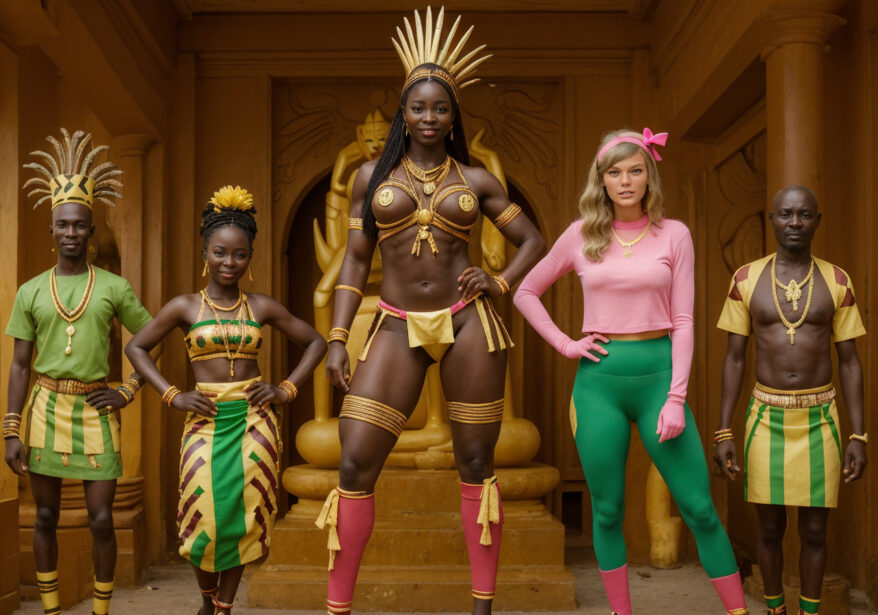Several months ago, I stood among the towering Makenji women at Kifaru Retreat, marveling at their sheer strength and presence. Now, on my return to this hidden paradise in Gabon, I’ve discovered another extraordinary people: the Sutanji.
Nestled in a valley just beyond the Makenji lands, the Sutanji are the perfect counterbalance to their giant neighbors. Where the Makenji dominate with physical power, the Sutanji captivate with grace, wisdom, and a spiritual tradition that draws travelers seeking serenity. With their serene temples, fascinating rituals, and unique approach to life, the Sutanji have quickly become a must-visit part of the Kifaru experience.
A Culture of Respect & Blessings
If you’re visiting the Sutanji, there are a few things you need to know. First and foremost: baldness is a divine blessing.
Among the Sutanji, men who lose their hair early are considered deeply spiritual, as baldness is seen as a sign of enlightenment. If you happen to meet a bald Sutanji man, you may notice locals gently touching the top of his head—this isn’t an insult, but rather a sign of great respect. In fact, if a tall Makenji woman pats a bald Sutanji man on his head, he considers it an incredible blessing! I witnessed this firsthand when a Makenji huntress rested her palm on an elderly Sutanji monk’s head—his beaming smile could have lit up the entire rainforest.
Another tradition that surprises visitors is the lap ritual. When visiting one of the Sutanji’s sacred statues, don’t be afraid to sit on the lap of a deity figure. Instead of being disrespectful, this act is a way to seek divine favor. While Western tourists often hesitate, local Sutanji monks encourage visitors to embrace the tradition and sit comfortably, explaining that it creates a spiritual connection with the divine.
Temples, Festivals, and Cross-Tribal Friendships
The Sutanji’s spiritual buildings, scattered across their forested homeland, are mesmerizing. Their temples, adorned with intricate carvings and golden embellishments, reflect their philosophy of peace and unity with nature. Pilgrims from across the country have started visiting these serene places, and tourists are following suit.
The Makenji and Sutanji people have always lived in harmony, forming deep friendships despite their extreme physical differences. They even host joint festivals, which I was lucky enough to experience. The sight of towering Makenji women gracefully performing strength dances alongside the agile, fast-moving Sutanji was nothing short of mesmerizing.
At one point, I found myself in a circle of Makenji warriors and Sutanji monks, both groups exchanging laughter and stories. One Makenji woman jokingly lifted a bald Sutanji elder onto her shoulders like a trophy, and the entire festival erupted in applause.
Travel Tips for Adventurers
If you’re heading to Kifaru Retreat and want to explore both cultures, here are a few tips:
-
Respect the bald spot! If you see a bald Sutanji man, a light touch on the head is a sign of admiration—but always ask first.
-
Embrace the lap tradition. If you want a true spiritual experience, sit on the lap of a temple statue and take in the tranquility.
-
Pack for adventure. The Makenji still run adrenaline-filled jeep safaris, and the Sutanji’s hilly temples require solid hiking shoes.
-
Attend a festival. If your timing is right, seeing both tribes celebrate together is an unforgettable experience.
Between the giant huntresses of the Makenji and the serene wisdom of the Sutanji, Kifaru Retreat has transformed into one of the most unique travel destinations in Africa. One thing’s for sure—I’ll be back again.

